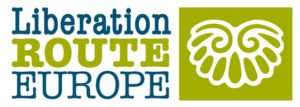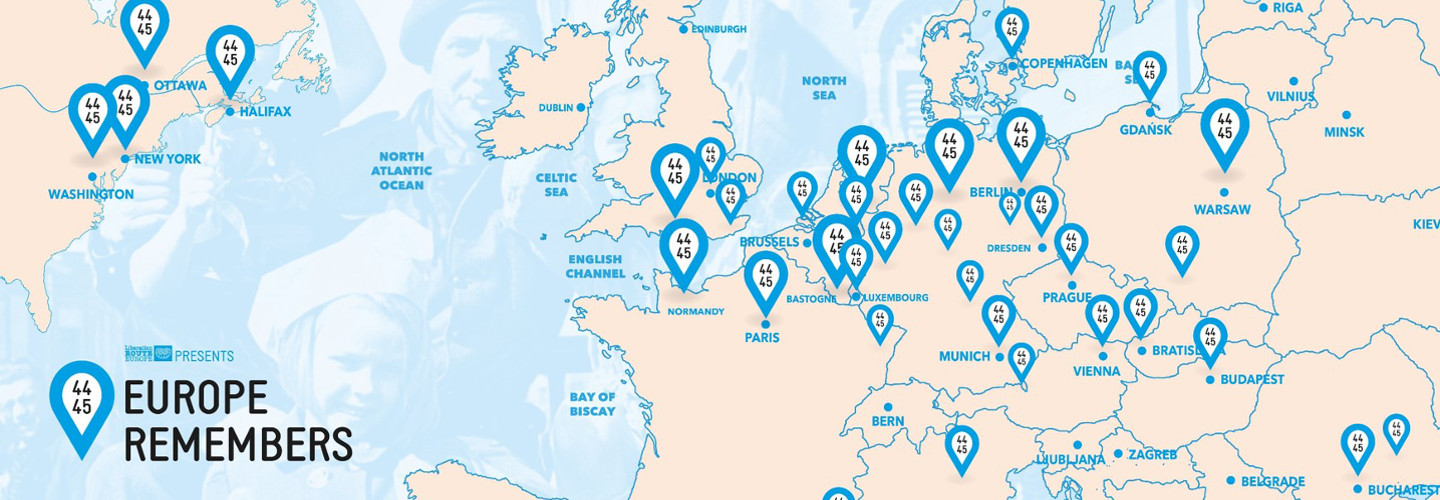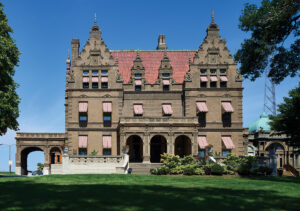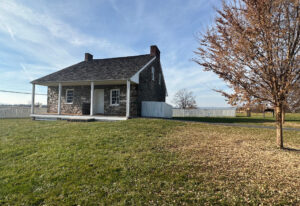On September 17, 1944, Sergeant Jacob H. Wingard jumped out the door of a C-47 transport aircraft flying over southern Holland. The 22-year old was one of 12 soldiers to leap out of the aircraft—among the 34,600 paratroopers dropping as part of Operation Market Garden, a large-scale British-led Allied operation to liberate Holland from Nazi occupation. Once on the ground and assembled, the 3rd Battalion, 501st Parachute Infantry Regiment, 101st Airborne Division—including Wingard—was to secure the town of Eerde, located three kilometers southwest of Veghel. Other elements of the 101st Airborne would focus on Son and St. Oedenrode.
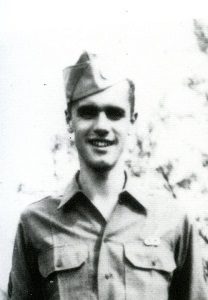
By the afternoon, 3rd battalion had secured Eerde, forming a defensive perimeter and digging in around the St. Antonius windmill. Throughout the night and through the following morning, German units repeatedly attacked the battalion’s positions, with many of the engagements devolving into fierce close quarters fighting in the town’s houses and sheds. The windmill also suffered extensive damage, from small arms, tank fire, and from shrapnel when a M4 Sherman tank was destroyed only feet from its base.
During the morning’s fighting, Wingard, his platoon leader, and another paratrooper climbed into the windmill, using its elevated vantage point to direct artillery fire onto attacking German soldiers, who were threatening to overrun several areas along the 3/501st’s lines. At around 11:00 am, a German sniper saw Jacob Wingard at the windmill’s upstairs window and fired, hitting the American squarely in the chest. Wingard collapsed and died shortly thereafter. Faced with increasing numbers of German units pressing against American positions, the battalion was forced to withdraw out of the town and towards Veghel. The Germans soon recaptured and occupied Eerde.
Wingard’s story and sacrifice is but one of many remembered and honored by the Liberation Route Europe Foundation, an initiative that traces its origins to the Netherlands in 2008. Liberation Route Europe is a network of 200 locations marking key events, people, and places of the Allied path across Western Europe in 1944-1945. The trail currently connects Great Britain, France, Belgium, Poland, the Czech Republic, and Germany, with plans to expand to Italy. Each point of interest is identified by a large boulder and plaque bearing the site’s historical significance. Visitors can use the foundation’s website or its app’s “audiospots” (combining personal stories with the larger historical context) to learn the firsthand experiences of people affected by the most crucial conflict of the 20th century.
The St. Antonius Windmill now houses a memorial to Wingard and a monument to the men of the 501st Parachute Infantry Regiment. The monument, unveiled in 1981, is the site of an annual service in September, and the windmill was restored in 2011.
Other Liberation Route Europe sites include:
The National Liberation Museum, located near the 82nd Airborne Division’s drop zones during Market Garden, uses mixed displays and an impressively detailed and scaled diorama to examine the 82nd’s movements during the course of battle, including its advance toward Nijmegen, Grave, and across the Waal, Maas, and Rhine rivers. The 82nd’s drops were extraordinarily successful—nearly 90% of its paratroopers and 84% of its gliders ended up within 3,300 feet of their drop zones—and the diorama includes accurate locations for the latter.
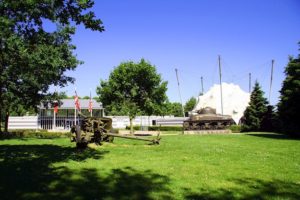
Three days after landing south of Nijmegen, American paratroopers of the 82nd Airborne Division were tasked with crossing the Waal River. Capturing the bridge over the river was one of the Allies’ primary goals, as it was crucial to keep open the single road leading north to Arnhem, where the British 1st Airborne Division and Polish 1st Independent Parachute Brigade were engaged in heavy fighting. After repeated logistical delays, paratroopers of 3rd Battalion, 504th Parachute Infantry Regiment were forced to use 26 canvas boats that provided no protection from enemy fire. An insufficient number of oars also forced many men to use their M1 rifle butts to row. The paratroopers crossed in multiple waves, suffering nearly 50% casualties, but succeeded in helping to capture the bridge intact.
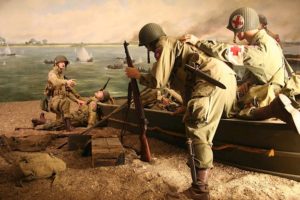
Nearby, the Sunset March occurs every evening in Nijmegen at a new bridge over the Waal River. The span, finished in 2013, features 48 pairs street lights—one for each of the 48 American soldiers killed during the 82nd Airborne Division’s river crossing. Every evening, a military veteran marches across the bridge, and each pair of the tribute lights are switched on at their pace. The public is invited to join the march, which culminates at the memorial on the far end of the bridge.
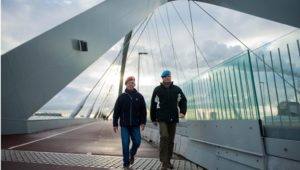
The Airborne Museum is located at Villa Hartenstein. First established as an inn in 1728, the building served as the headquarters of the British 1st Airborne Division commanded by Major General Roy Urquhart. After dropping around Arnhem, the division fought off attacks from the II SS Panzer Corps for nine days. The British troops suffered over 75% casualties as they desperately clung to an decreasing perimeter before being ordered to withdraw on September 25. The museum, established in 1980, features interviews with soldiers and civilians who experienced the battle alongside unique historical objects—including Allied and German weapons, equipment, and personal effects.
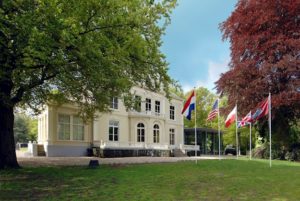
The Airborne War Cemetery in Oosterbeek, just west of Arnhem, is the location of more than 1,700 graves of Allied troops killed during 1944-1945. Most of the casualties are from Operation Market Garden, but others from subsequent operations were also interred there. The fallen include 1,432 British Commonwealth soldiers, 73 members of the 1st Polish Parachute Brigade, 8 Dutch civilians, and 253 unidentified bodies. An annual ceremony continues to be held at the site.
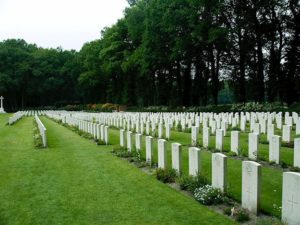
The German War Cemetery in Ysselsteyn is the location of more than 31,500 graves, the vast majority of which fell during World War II. Those interred include soldiers of different nationalities who fought alongside the German military. The site is the largest German war cemetery in the world and is administered and maintained by the German War Graves Commission.
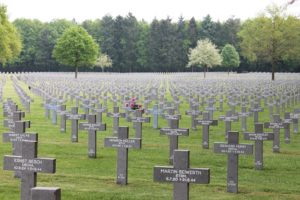
Located on top of a former SS camp, the Camp Vught National Memorial stands to remember the 31,000 people who were imprisoned there between January 1943 and September 1944. The site features exhibits, places to reflect on the tragedy, and a memorial to nearly 1,300 Jewish children deported and murdered in June 1943. The museum includes reconstructed watchtowers, barracks, and a crematorium.
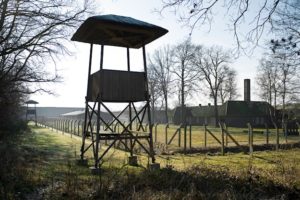
The Overloon War Museum, also called the National War and Resistance Museum of the Netherlands, is the largest war museum in the Netherlands. Housed in a spacious hangar on 34 acres of land in South Brabant, it features more than 150 period vehicles, weapons, and aircraft that are presented alongside personal, firsthand experiences to commemorate the Battle of Overloon, an infantry and tank engagement that occurred shortly after Operation Market Garden.
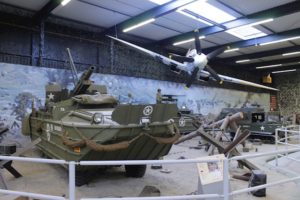
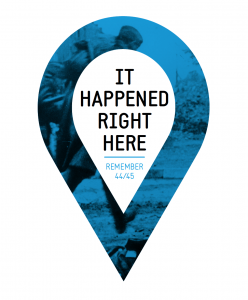
With the 75th anniversary of the end of World War II in Europe in 2019, Liberation Route Europe has launched a tourism campaign—Europe Remembers—to coordinate, facilitate, and organize travel to the dozens of commemoration events that are scheduled to take place on the continent. The campaign will provide historical information about the war and its millions of participants, as well as a calendar of events and other relevant tourist information.
Europe Remembers also works with regional partners and foundations to provide resources and activities at a local level. One such initiative is Brabant Remembers, which intends to reach wider audiences—including younger generations—with a cutting-edge, interactive smartphone app. Among the 75 eyewitness stories, honoring each year since Europe’s liberation, the app uses 30 actors to portray 10 wartime experiences in Brabant. When at one of the sites, users will be able to view a personal story overlaid as a movie on top of the actual locations, effectively conveying the human experience to visitors.
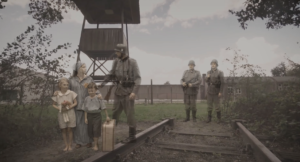
In July 2019, the Travel the Liberation Route Europe guide will be available. The unique publication will feature both historical facts and personal stories, as well as providing a full overview of the organization’s activities and sites, including museums, memorials, recommended itineraries, and points of interest along the Liberation Route.

In 2020, Liberation Route Europe will inaugurate an expansive and unique network of international hiking trails, stretching nearly 2,000 miles from London to Berlin. Focusing primarily on the last two years of the war, the cross-border trails will lead visitors through hundreds of historical sites marked by custom designed route markers called “vectors.” Touching on military and civilian experiences, the trail plans to honor international cooperation, the unification of European unification, and the 75 years of freedom since the end of the world’s most cataclysmic conflict.
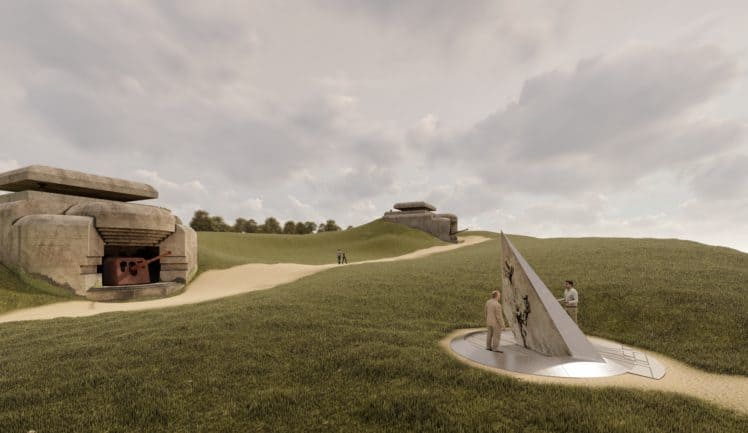
Visit: www.liberationroute.com
